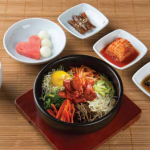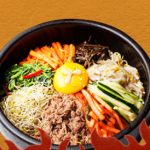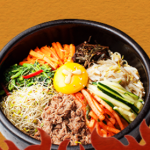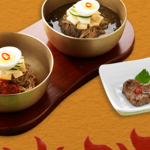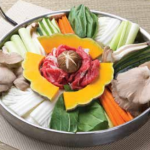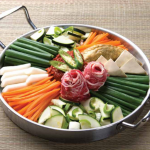Do you fancy a gastronomic adventure that tantalizes your taste buds and takes you on a culinary journey? Look no further! Today, we embark on a delightful exploration of the popular Korean dishes that have taken the world by storm. Bursting with vibrant flavors, exotic ingredients, and unique cooking techniques, Korean cuisine is sure to leave you craving more. So, put on your apron and let’s dive into the delectable realm of Korean food!
Embrace the Spicy Sensation: Kimchi
No Korean cuisine experience is complete without mentioning kimchi. This iconic dish, synonymous with Korea, showcases the country’s love affair with fermented vegetables. Typically made from cabbage, kimchi is painstakingly prepared by fermenting it with an array of seasonings including chili pepper, garlic, ginger, and jeotgal (salted seafood). The resulting spicy, tangy, and pungent flavors of kimchi make it a perfect companion for any Korean meal.
Satisfy Your Cravings: Bibimbap
Bibimbap, which literally translates to “mixed rice,” is a colorful and nutritious bowl of goodness. This signature Korean dish features a bed of steamed rice topped with an assortment of colorful vegetables such as carrots, sprouts, spinach, and mushrooms. But what truly elevates bibimbap is the gochujang sauce, a savory and spicy red chili paste, which is mixed into the dish before consumption. The combination of flavors and textures in bibimbap will leave you craving this delightful mealtime and time again.
Unveiling the Original Korean BBQ: Samgyeopsal
Prepare to elevate your grilling game to new heights with samgyeopsal, the famous Korean BBQ. Samgyeopsal consists of succulent slices of pork belly that are grilled to perfection at the table. Enjoyed with an array of accompanying side dishes called banchan, including ssamjang (a spicy dipping sauce), kimchi, and fresh lettuce leaves, samgyeopsal offers an interactive experience that is as delicious as it is enjoyable. Fire up the grill, gather your loved ones, and savor the flavors of this beloved Korean delicacy.
Seafood Delight: Haemul Pajeon
Haemul Pajeon, a savory Korean pancake, is a seafood lover’s dream. The pancake batter, made from a mixture of wheat flour, eggs, green onions, and Korean pancake mix, is generously filled with a medley of fresh seafood ranging from shrimp to squid and even octopus. The pancake is pan-fried to give it a delightful crispy texture, while the seafood brings a burst of oceanic flavors. Dip each mouthwatering slice in the accompanying soy-based sauce, and you’ll find yourself longing for more of this delectable treat.
The Perfect Warmth: Sundubu Jjigae
When the temperature drops and you’re in need of warmth, Sundubu Jjigae comes to the rescue. This spicy soft tofu stew is a comforting dish that soothes the soul. Served piping hot in a stone bowl, Sundubu Jjigae features silky soft tofu immersed in a spicy broth made with chili paste, seafood, vegetables, and various seasonings. The contrasting textures and bold flavors of this hearty stew bring delight with each spoonful, making it a beloved winter favorite in Korean households.
Conclusion
Korean cuisine offers a wide array of delectable dishes that not only excite the palate but also embody the culture and essence of Korea itself. From fiery kimchi to sizzling BBQ, each dish tells a story and leaves a lasting impression. So, whether you’re a seasoned foodie or a curious adventurer, let Korean cuisine take you on a remarkable journey you won’t soon forget.
FAQ
Q1: What makes Korean dishes stand out from other cuisines?
Korean dishes are known for their bold flavors, extensive use of fermented ingredients, and meticulous attention to presentation. Each dish showcases a harmonious balance of sweet, spicy, and savory elements, making it a truly unique culinary experience.
Q2: Are there vegetarian options available in Korean cuisine?
Absolutely! While Korean cuisine traditionally includes meat-based dishes, there are plenty of vegetarian options available. Tofu-based dishes, vegetable stir-fries, and various vegetable side dishes (banchan) like kimchi and pickled radishes are excellent choices for vegetarians.
Q3: Is Korean food always spicy?
While Korean cuisine often incorporates spicy elements, not all dishes are overly spicy. Korean cuisine boasts a range of flavors, and you can easily find non-spicy dishes to suit your taste preferences.
Q4: Can I find Korean ingredients easily outside of Korea?
With the rise in popularity of Korean cuisine, many Korean ingredients are now readily available in international markets and online. You can find staples like gochujang (red chili paste), soy sauce, and sesame oil in many grocery stores, enabling you to recreate authentic Korean dishes at home.
Q5: What are the must-visit Korean food destinations in South Korea?
If you’re planning to embark on a culinary adventure in South Korea, make sure to explore the vibrant food scenes of Seoul, Busan, and Jeonju. These cities offer a rich tapestry of street food stalls, traditional markets, and renowned restaurants where you can indulge in the best of Korean cuisine.







